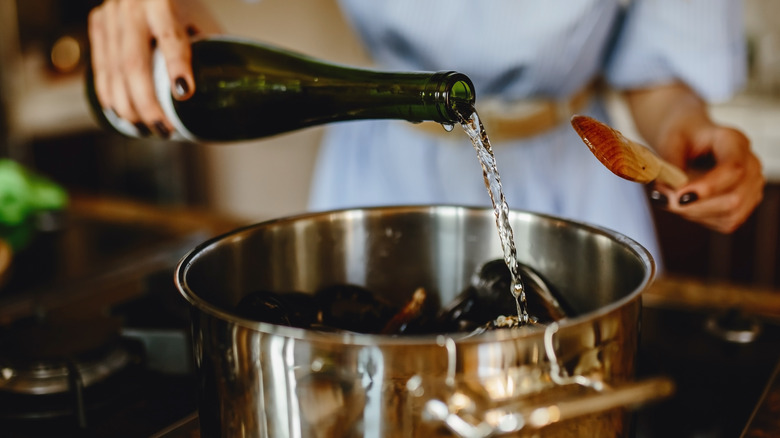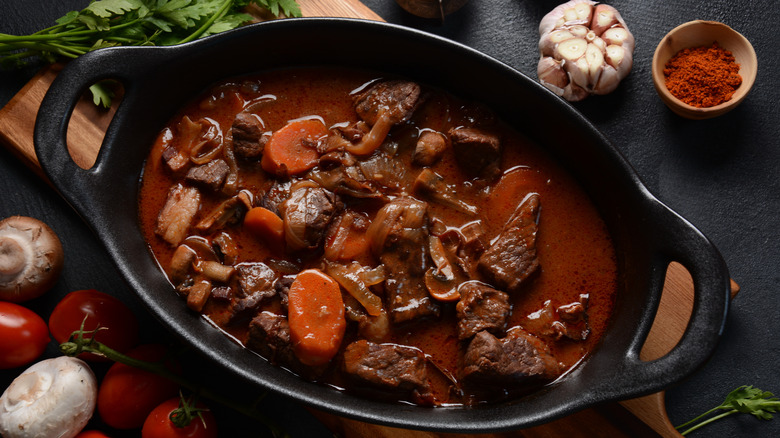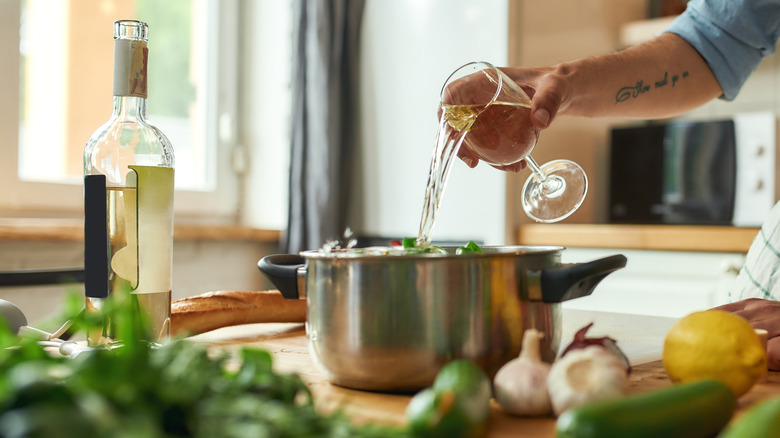Why You Should Never Spend More Than $10 For Cooking Wine
If you're making a recipe that calls for wine to be added, you might find yourself with a lot of questions. Should you use an older bottle of wine sitting in your fridge that's been opened? Should you go out and buy a new one? How much should you spend? How much will you really taste the wine when the dish is done?
You might think that an expensive, higher-quality wine that has great flavor in the glass is the way to go. After all, it will surely impart the same great flavor to your dish. While this is true to a degree, the bottom line is that some of that greatness will be lost in the cooking process, and the bottle will begin oxidizing the moment you open it and spoil in about 48 hours anyway.
In general, when adding wine to a meal, you want to use a decent choice — between $4 and $10 is ideal.
You want to enjoy the wine you're cooking with
There's a balance you want to strike when cooking with wine, and that balance is using a wine that's good enough that it won't ruin the dish but not so pricy that you'll feel guilty pouring it into a saucepan or Dutch oven. While most of the complex flavors in the wine will be lost during the cooking process, the overall notes of the wine will still come through in your sauces or braising liquids. For this reason, it's important to really know the flavors of the wine you're using in the dish. If the flavors and notes of the wine just absolutely don't vibe with what you're cooking, feel empowered to use another wine. If you're adding white wine to a seafood pasta dish, for example, use a wine that will compliment the flavors well — a light, dry white wine over an oaky Chardonnay.
If you consume alcohol in your daily life, pour a sample glass of the wine while you're cooking so you can understand the flavors and notes. Is the wine acidic, tannic, earthy, fruit-forward? Well, some of that will come across in the dish. Moreover, if the wine is a lackluster bottle, your dish could end up the same.
Stay away from bad wine
If you're spending your hard-earned money on good quality and responsibly sourced meat and produce, there's no sense in ruining your ingredients by highlighting them or bathing them in bad wine. While there's absolutely no reason to use a $40 bottle of exquisite wine to braise short ribs, do not, under any circumstances, use a bottle of wine that is garbage. Your taste buds will thank you later.
A good rule of thumb when cooking with wine is to use a bottle of wine that you'd drink — maybe just not the nicest bottle of wine you'd drink. If you're unfamiliar with some of the less expensive bottles of wine, ask the experts at your grocery store or wine shop for their recommendation, and don't shy away from telling them that you'll be using most of the bottle for a recipe. They'll understand.
Another compelling reason to stay clear of cooking with bad wine is that you can enjoy a glass while cooking or with the meal. If you like the flavor of the wine you're cooking with, share a glass with your guests to go with the meal.



